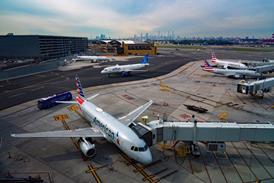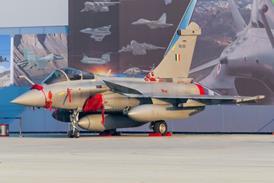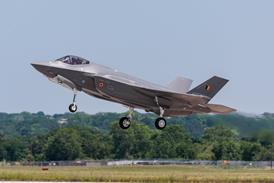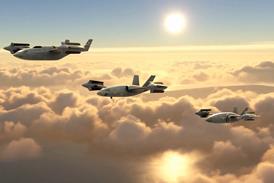When Kingfisher Airlines began operations in 2005, owner Vijay Mallya borrowed the tagline from his alcoholic drinks business and promised his passengers a good time in the skies. The fizz has certainly gone out of the full-service carrier - and the Indian airline industry - since.
Kingfisher's very existence is being questioned as it totters under the burden of heavy debt and the fact it has not made a profit since it began operations. After several rounds of debt-to-equity conversions, institutional investors have little confidence in the airline.
 |
|---|
© Boeing/Airbus |
Mallya, one of India's richest men, has already pumped in millions and is desperately trying to find fresh investors. But almost 200 pilots have quit and joined rival carriers, while those who remain have not been paid for months. The airline cancelled at least 65 of 240 flights in the week following February 17, and grounded 38 of its 66 aircraft. It initially blamed "bird strikes" for the grounding, but admitted a day later it was driven by a cash crunch after the income tax department froze its bank accounts.
With India's Directorate General of Civil Aviation warning Kingfisher's slots could be given away unless it comes up with a new schedule, and with the banks chasing the airline for loan repayments, there is speculation it may not even survive to be involved in the third Indian Aviation show in Hyderabad on 14-18 March.
A dark cloud hangs over the show, which is dedicated to the Indian civil aviation industry. Yet there are still grounds for optimism. Boeing said Indian domestic passenger traffic reached 53.6 million in fiscal 2011, while international traffic was 13.1 million. The airframer added that both should grow at 8.1% annually during the next 20 years. It forecasts a $150 billion market for 1,320 new passenger aircraft in India.
"The economic and air-traffic growth will, in turn, stimulate demand for a variety of aircraft types," Boeing said. "The need is great for new airplanes that can efficiently and profitably fly short- and long-haul routes. This demand is driven by growth in developing and emerging cities, demand from low-cost carriers, and the need to replace an ageing fleet."
The government remains a hurdle to growth at both national and state level. There are serious problems regarding the redevelopment of some major hub airports, while plans to refurbish or rebuild those in tier two or tier three cities are moving at snail's pace.
Comparing Singapore with India, IATA director general Tony Tyler points out how economic growth has grown in tandem with the aviation industry in Singapore. He says India is a market with enormous potential, but aviation development is being "held back" by government policies.
During a speech at Singapore Airshow in February, he said: "High taxes mean that fuel accounts for an average of 45% of an Indian airline's operating costs - against an industry average of 32%."
"A lack of capacity in the country's economic heart - Mumbai - restricts connectivity, while development of the new Navi Mumbai airport seems to incur a fresh roadblock at every stage of its development. And where world-class infrastructure has been built - as in Delhi - costs are an issue. Proposals to boost charges by 340% may earn it distinction as one of the world's most expensive airports, but it will destroy Delhi's competitiveness as a hub.
STUNTED GROWTH
"The stunted growth of Indian aviation comes with an economic cost. India's population is about 240 times the size of Singapore's, but the number of aviation jobs is just about 14 times larger at 1.7 million. And the economic contribution of aviation is still only 0.5% of the Indian economy. It is an important 0.5%, but even considering the differential in GDP per capita between Singapore and India, these numbers tell us that there is unused potential in India. There is a need to reassess policies in order for aviation to reach its potential as a primary contributor to India's economic growth."
While airlines can rightly point a finger at the government, they should also realise the finger points at them. Despite the strong growth in demand, most have been reporting massive losses since 2005. This is mainly because capacity has consistently grown faster than traffic. Coupled with the high cost base, rising fuel prices, and low ticket prices, yields have been falling and the break-even load factor has been climbing.

In 2006, when the Indian airlines began to make losses, the civil aviation ministry pushed for consolidation. That led to the merger of state-owned Air India and Indian, while Kingfisher bought low-cost carrier Deccan and Jet Airways bought Sahara. They all gradually converted most domestic operations to the low-fare model, prompted by inroads made by dedicated low-cost carriers and newcomers such as IndiGo, SpiceJet and GoAir.
However, in competing with the trio the full-service carriers kept fares unsustainably low - given their high cost base - and exacerbated their situation. Air India, Kingfisher and Jet added more debt to their balance sheets and their capital costs went up as they had all gone on an aircraft-ordering binge only a few years earlier. But instead of deferring or cancelling orders, Indian airlines continued to take deliveries as it sought to build market share. However, this was not in balance with revenue passenger kilometres or available seat kilometres.
While last decade's delivery spurt was driven by the full-service carriers, low-cost carriers appear to be heading down the same path. A total of 64 deliveries are expected in 2012 - mostly to the three low-cost carriers. Based on existing orders, that will dip to 52 in 2013 but grow to 61 in 2014, with robust numbers until 2021.
In November, senior executives of India's privately-owned airlines met prime minister Manmohan Singh in New Delhi to ask for government help to overcome the dire operating climate which has resulted in multiple years of losses for most of them.
Industry sources say Singh largely maintained a sphinx-like silence but afterwards, while expressing his sympathy, he made one thing clear: the government will help ease the regulatory environment but its priority is to improve connectivity within the country and not save airlines.
The officials from Kingfisher Airlines, Jet Airways, SpiceJet, IndiGo and GoAir were not too happy. After all, this was the same administration spending hundreds of millions of rupees to keep state-owned Air India afloat. However, a government official points out that Air India's situation is different.
"Air India employs a lot of people and there are too many vested interests. The state owns Air India and, as such, it must protect its investment," he said.
"The private airlines just have to figure it out themselves. The government will help to cut taxes and reduce costs, but it can't bail out the airlines. If any of them went bust, it may actually help the industry by reducing capacity and, given the high demand, result in higher fares."
Given Kingfisher's state, the official may get his wish sooner, rather than later.
Source: Flight International




















